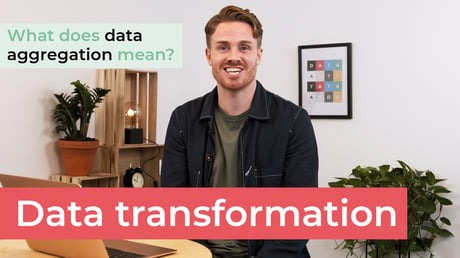-
Written by Christopher Van Mossevelde
Head of Content at Funnel, Chris has 20+ years of experience in marketing and communications.
In this video, we discuss what data aggregation actually means and why it's important to be able to understand your marketing data. You can either watch the video (above) or read the extended script below.
Understanding data
Data aggregation is one of those terms that people in the marketing world can be intimidated by because it sounds a little bit mathy. But actually, data aggregation is the key for the human eye to be able to easily understand data.
What is data aggregation?
Data aggregation means sorting data in various ways to reduce the number of rows needed. Instead of showing all data points separate (raw data), aggregated data is bucketed in a meaningful way. Data aggregation helps with visualising the data so that it is useful and easy to understand.
Raw data vs aggregated data
Raw, unrefined data to the human eye is chaotic, unorganized, and can start to blend together. It can consist of thousands of rows of data, so it's easy to get lost scrolling and scrolling. Think about it this way: while a computer wants a lot of data to process, humans want answers.
Take for example a table with your cost for every day of the year. That would be a table with 365 rows. Which is some serious scrolling time!
Also, what does looking at that overview of data tell you about what your cost was for a week or month? Or what the average cost per month was? This is where data aggregation comes in.
How does data aggregation help?
While the complete list of daily cost data doesn't give you much insights, combining the total to create a monthly total for each of the 12 months is a form of data aggregation.
Another aggregated version of the cost data table could be something like cost for every week of the year. Now you have a simple table with 52 rows giving you a week-by-week view of your spend.
A third example of data aggregation is when you have ad campaigns running on several platforms, like Facebook, Reddit, Twitter, LinkedIn, Google Search and Bing. You can get metrics such as clicks, conversions, cost and CPC from all these platforms.
However, this would be a rather large table and might not be super insightful. Especially if your manager would ask to evaluate social platforms vs search platforms. Data aggregation will be needed to aggregate data from the social platforms, and for the search platforms as well.
The data aggregation process
A good way to start with data aggregation yourself, is to follow these steps:
- Determine what you want to learn. By writing down the question you have, you can get a better understanding of how to aggregate the data.
- Understand your current data set. Make sure you know what raw data you have, how many data points (cells) it contains and where it comes from.
- Use a data aggregation tool. A tool like Funnel can help with automated data aggregation in various ways.
- Make sure the aggregated data is reliable. Do this by manually calculating a a sample of your data and checking if the aggregated number matches your own calculation.
Who work with data aggregation?
Data aggregation is not only relevant for data scientists or data analysts. Most people who work with collecting data, will also need to do some data aggregation at some point. Marketing professionals for instance, usually collect data from multiple sources: their company website, advertising and e-mail platforms. Modern marketeers need at least a basic understanding of how data works.
Conclusion
Ultimately, data aggregation is a from of data transformation. It is about summarizing your data so you can visualize it in a way that tells a story quickly and efficiently.
Related reading: What is data storytelling?
-
Written by Christopher Van Mossevelde
Head of Content at Funnel, Chris has 20+ years of experience in marketing and communications.
